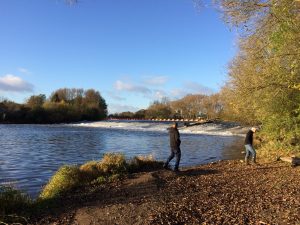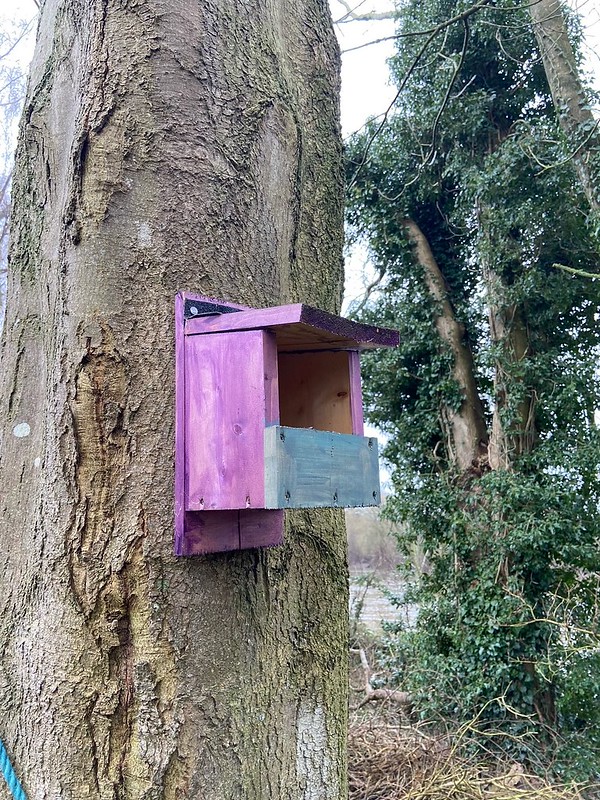
We talk a lot about the brilliant work this project is doing for endangered fish species, but what you might not know is that Unlocking the Severn are also working on improving habitats above the water too. Just in time for the Big Garden Birdwatch, this blog highlights the recent conservation work we have done for local bird populations on Diglis and Holt Lock islands.
Supporting populations above and below the water
While the Unlocking the Severn project is largely focused on the twaite shad and other endangered migratory fish species, we like to add additional benefits to local wildlife where we can. Through two of our key volunteering groups, the Green Team and the Severn Conservation Taskforce, we have improved and added new habitats on Diglis and Holt lock islands. New habitats for a multitude of wildlife!
One type of wildlife which are particularly benefiting from the habitat improvement work we are doing are local and migratory birds.
Bird species appear to be in decline in the UK. The most recent assessment of the UK’s 245 regularly occurring bird species, called Birds of Conservation Concern 5, was published last month. It shows that 70 species are now on the Red list of species with the ‘highest conservation concern’ (RSPB). This is now over a quarter of all British bird species (JNCC). It is important to note that national conservation efforts, work with overseas partners, and action on climate change are required to reduce the number of species on the Red list. However here at Unlocking the Severn, we are working on some smaller changes to help boost the bird populations more locally. At the very least we will be providing different species with favourable nesting sites around Diglis and Holt Lock.
Bird boxes
One task we have focused our attention on over the last year is creating more available nesting sites for birds on Diglis and Holt Lock islands. Our volunteers have helped us build and put in place bird boxes across the two islands.
We wanted to provide homes for the varied assemblage of birds that can be spotted along the River Severn. Therefore the team chose to install different types of bird boxes, rather than simply working with one design.
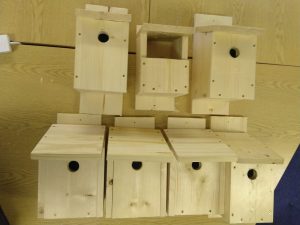
The open fronted boxes are designed for robins and pied wagtails. The boxes with the smallest holes (25mm in diameter) are homes for blue, coal and marsh tits. The slightly larger holes (28mm) are ideal for great tits, tree sparrows and pied flycatchers. We are also looking at fixing owl and kestrel boxes to other locations on the lock islands in the future. All our nesting boxes are checked to make sure they are fit for purpose. Local RSPB volunteers perform regular nesting box surveys and walking surveys at Diglis and Holt.
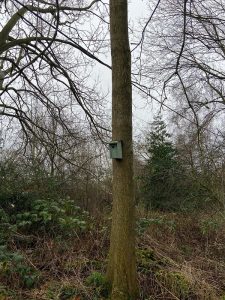
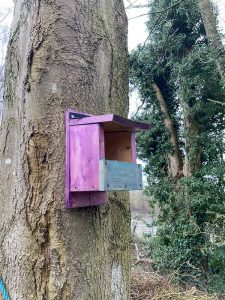
Bramble rotation
Another conservation project our volunteers have been working on is called ‘bramble rotation’.
Bramble rotation is a method of is managing brambles in a such a way that creates a mixed habitat of young and old brambles on the island. Just as some humans prefer traditional houses while others prefer modern builds, different species of birds and insects prefer different aged brambles!
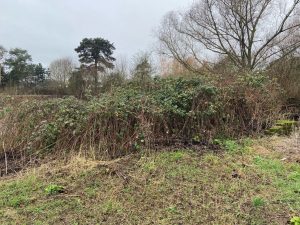
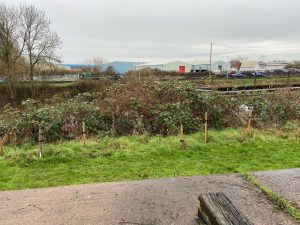
Our ‘bramble rotation plan’ was devised by Waterways Environment Apprentice, Aaron, in collaboration with the Green Team volunteers. It gives us a good idea of which sections of vegetation are being cut back and which are being left to grow. This will to maintain a balance of young, middle and mature bramble stands, which increases habitat diversity.
Sand martin colony box
Sand Martins, Riparia riparia, use the River Severn as a navigation pathway when migrating. It has been observed that a colony of sand martins have chosen Diglis Basin as a frequent nesting spot. However, their nesting spots are located in drainage outlet pipes, which is a hazardous spot for the birds. During heavy rainfall or flooding, the nests are destroyed and any offspring present will not survive.
Instead we’re giving the birds a new home! Unlocking the Severn are working with the local RSBP and Worcester Environmental group to build and install a sand martin colony box on the east side of Diglis Island. The colony box is a large 2.4 m by 1 m structure, raised off the ground. There are a number of holes on the front of the box to provide entrance for birds. Inside, we will fit a series of tubes for them to nest in.
The location of the box has been well chosen: clear of vegetation and on the edge of the river. This will resemble a natural cliff bank which sand martins favour as a nesting site.
The sand martin project is currently in its early stages, however if all goes well we hope to see it in place on Diglis island this spring.


